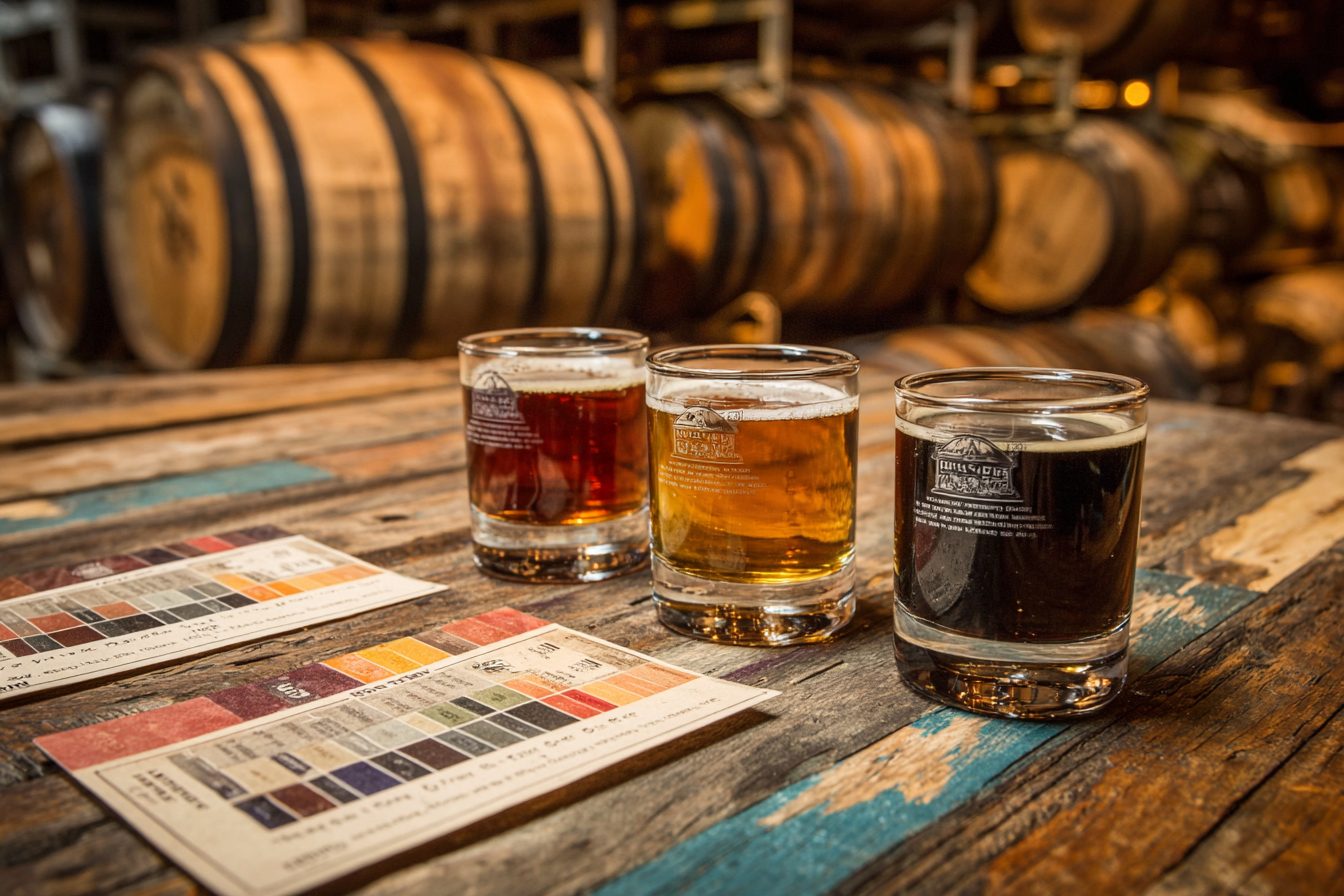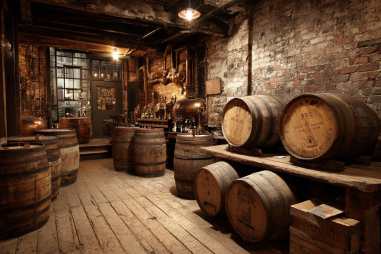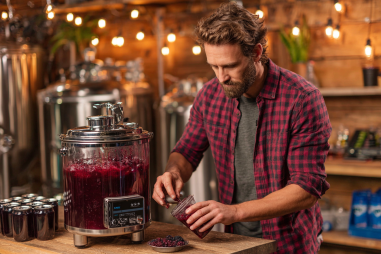Wood-aged stouts are a special breed in the world of craft beer, offering layers of complexity that challenge and excite the palate. These brews undergo maturation in wooden barrels or with wood chips, allowing them to absorb unique flavors and aromas from the wood and any previous contents, such as whiskey, bourbon, or wine. Whether you’re a seasoned connoisseur or just diving into the rich world of wood-aged stouts, understanding how to decode and articulate your tasting notes can transform your appreciation of this intriguing style. This guide will walk you through why tasting notes are essential, what common characteristics you might find, and how to sharpen your tasting skills for better enjoyment and communication.
Why Tasting Notes Matter for Wood-Aged Stouts
Tasting notes serve as a bridge between your sensory experience and the language we use to describe beer. For wood-aged stouts, this is especially important because these beers are rich with complex flavors that evolve over time. When you jot down what you notice, you not only deepen your awareness but also build a personal reference library that helps you discern different wood-aging profiles and styles.
Wood-aging introduces flavors beyond the typical stout profile of roasted malt, chocolate, and coffee. These additions can include vanilla from the oak, caramel from barrel char, or even hints of dried fruit from wine barrel origins. Writing tasting notes captures these subtleties, making each sip an opportunity to explore and understand the craft behind the beer.
Common Aromas and Flavors Described in Wood-Aged Stouts
When it comes to wood-aged stouts, the aroma and flavor profile can be incredibly diverse depending on the wood type, previous barrel use, and aging duration. Here are some common sensory notes you might encounter:
- Vanilla: A classic note from oak barrels, often smooth and sweet.
- Oak/Wood: The fundamental characteristic of any wood-aged beer, presenting sometimes as dry, sometimes as resinous or smoky.
- Caramel and Toffee: Derived from barrel char and the beer’s inherent malt sweetness.
- Dark Fruits: Notes like plum, raisin, fig, or cherry can emerge, especially if previous barrel contents were wine or port.
- Spices: Subtle hints of clove, cinnamon, or nutmeg can be imparted by the wood or fermentation process.
- Whiskey or Bourbon Notes: Smoky, boozy warmth often lingers in barrels previously housing spirits.
- Earthy and Leather: Deeper, more rustic tones that add an aged realism and dimension.
On the palate, these aromas showcase themselves with smooth mouthfeel, balanced bitterness, and a warming finish. Recognizing these elements is key to accurately describing what makes a wood-aged stout unique.
How to Take Effective Tasting Notes
To truly capture the story of a wood-aged stout, your tasting notes should be thorough but organized. Follow these steps to ensure you get the most out of every sample:
- Observe the Appearance: Note the color, clarity, and head retention. Is it deep black or slightly ruby? How about the foam texture?
- Smell Deeply: Take a moment to inhale the aroma. Try to pick out individual scents—vanilla, oak, dark fruit? Write these down as soon as you detect them.
- Take Small Sips: Let the beer linger in your mouth. Identify the dominant flavors, the balance of sweetness and bitterness, and the texture or body.
- Note the Finish: How long do flavors last? Is the finish smooth, dry, or warming? Any lingering notes of spirit or wood?
- Use Descriptive Language: Avoid vague terms like “good” or “bad.” Instead, use specific descriptors such as “toasty,” “woody,” “spiced” or “fruity.”
Sample Tasting Note Templates
To help you organize your thoughts, here are a couple of sample templates tailored for wood-aged stouts:
Template 1
- Appearance: Deep ebony with creamy tan head, moderate retention.
- Aroma: Intense vanilla from oak, layered with dark cherry and a hint of smoky bourbon.
- Flavor: Rich roasted malt foundation, caramel sweetness, subtle leather undertones, and a touch of clove spice.
- Mouthfeel: Medium-full body, smooth and slightly warming.
- Finish: Lingering oak and sweetness with a dry, warming spice close.
Template 2
- Appearance: Opaque black with a thick, mocha-colored head.
- Aroma: Earthy oak, vanilla bean, subtle notes of fig and raisin.
- Flavor: Balanced roasted bitterness, sweet caramel, layered with soft whiskey warmth and faint leather.
- Mouthfeel: Smooth and velvety with medium carbonation.
- Finish: Long, dry finish with residual dark fruit and oak tannins.
Exploring Subtle Nuances Unique to Wood-Aging
Wood-aging is akin to a conversation between beer and barrel, with each imparting subtle nuances that shift based on factors like the wood species, barrel history, and aging time. For example, American oak tends to give more pronounced vanilla and coconut notes, while French oak is often more subtle and tannic, lending a dry, savory edge to the stout.
Additionally, barrels that previously held bourbon or whiskey will contribute boozy warmth and smoky vanilla, whereas wine barrels can add fruity, tart complexity. Even the char level inside a barrel influences flavor — heavier char gives smokier, roasted notes; lighter char brings softer caramel and sweet oak.
Recognizing these subtleties enhances your tasting experience and allows you to appreciate the craftsmanship behind each bottle.
Practical Tips for Improving Your Tasting Skills
Even with experience, honing your tasting skills is a lifelong journey. Here are some practical tips to elevate your wood-aged stout tasting game:
- Compare Side-by-Side: Taste different wood-aged stouts in one session to identify style and barrel influences more clearly.
- Use a Glass Designed for Stouts: A tulip or snifter glass helps concentrate aromas for better detection.
- Limit Your Palate Fatigue: Taste in a neutral environment free from overpowering smells or flavors.
- Stay Hydrated: Water between samples keeps your palate fresh and ready.
- Keep Notes Consistently: Develop your own shorthand and vocabulary to quickly capture what you experience.
- Learn from Experts: Read professional tasting notes and attend tastings to expand your descriptive range.
Unlocking a Fuller Experience with Wood-Aged Stout Tasting Notes
The world of wood-aged stouts is rich with complex stories told through each sip. By taking detailed tasting notes, you not only improve your own sensory awareness but also contribute to a larger community that celebrates these intricate brews. As you become more attuned to the aromas and flavors wood-aging imparts, you’ll find your appreciation deepens and your enjoyment of every bottle grows. So next time you pour a wood-aged stout, take a moment, breathe it in, and unlock the language hidden within the wood, malt, and spirit—your taste journey awaits.







